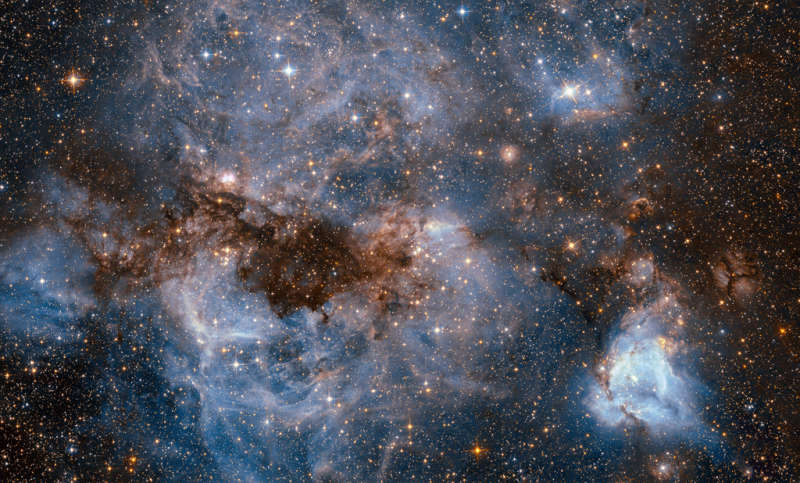N159 in the Large Magellanic Cloud

Explanation:
Over 150 light-years across, this
cosmic
maelstrom of gas and dust is not too far away.
It lies south of the Tarantula Nebula in our satellite galaxy the
Large Magellanic Cloud
a mere 180,000 light-years distant.
Massive stars have formed within.
Their energetic radiation and powerful stellar winds
sculpt the gas and dust and power the glow of this
HII region,
entered into the
Henize
catalog of emission stars and nebulae in
the Magellanic Clouds as N159.
The bright, compact, butterfly-shaped nebula above and left
of center likely contains massive stars in a very early stage of formation.
Resolved for
the first time in Hubble images, the
compact blob of ionized gas has come to be known as
the Papillon Nebula.
Participate: Take an
Aesthetics &
Astronomy Survey
Authors & editors:
Robert Nemiroff
(MTU) &
Jerry Bonnell
(USRA)
NASA Web Site Statements, Warnings,
and Disclaimers
NASA Official: Jay Norris.
Specific
rights apply.
A service of:
LHEA at
NASA /
GSFC
& Michigan Tech. U.

